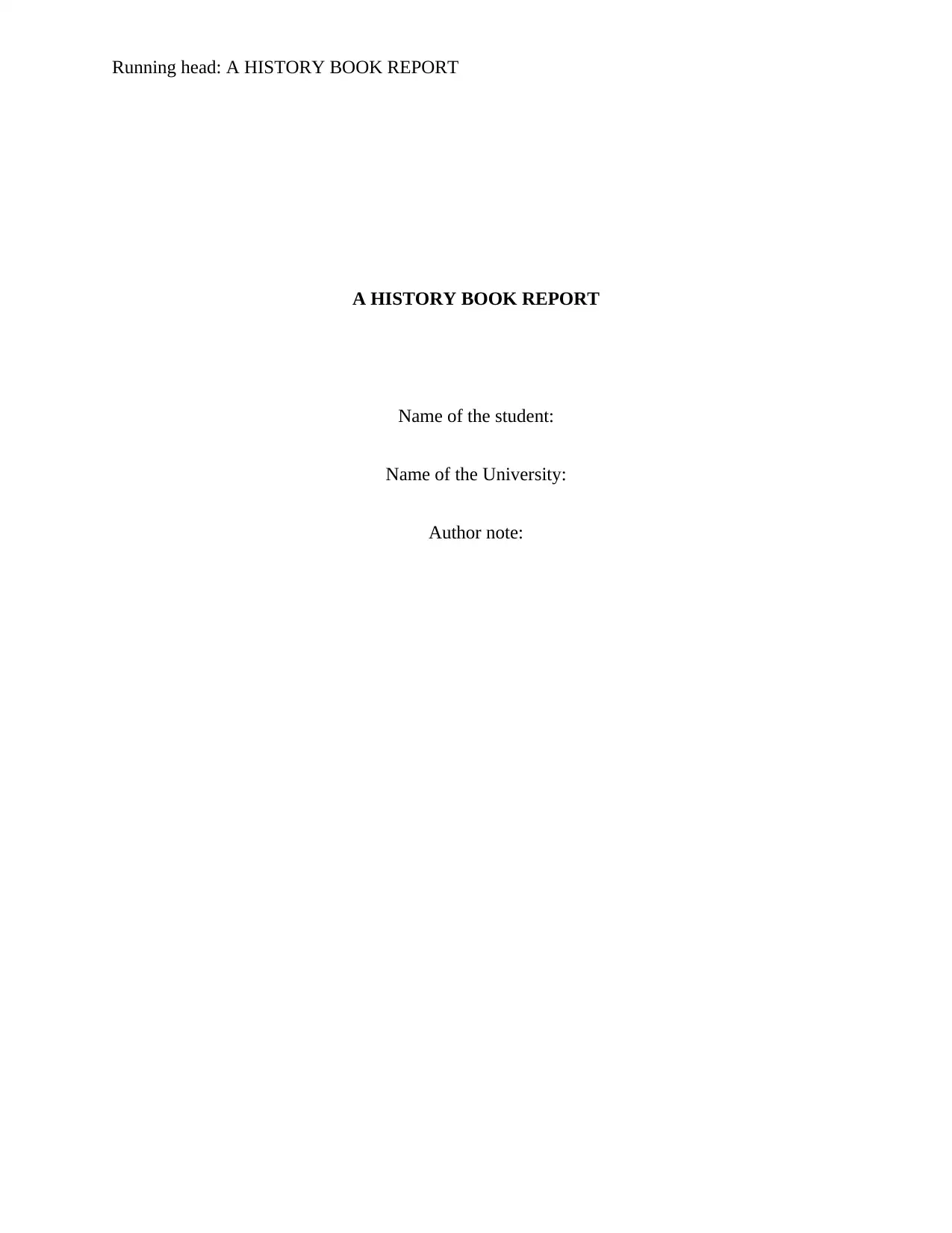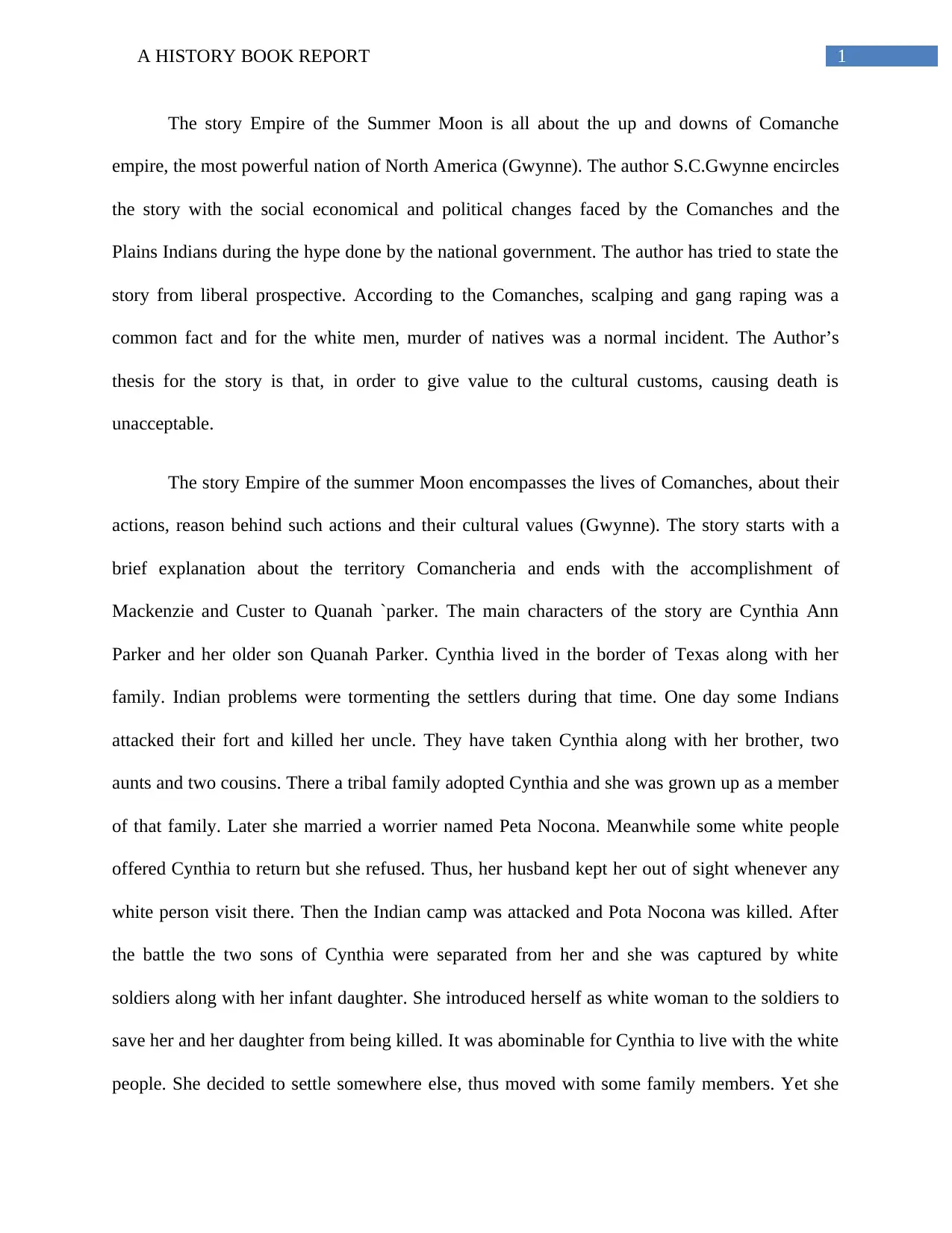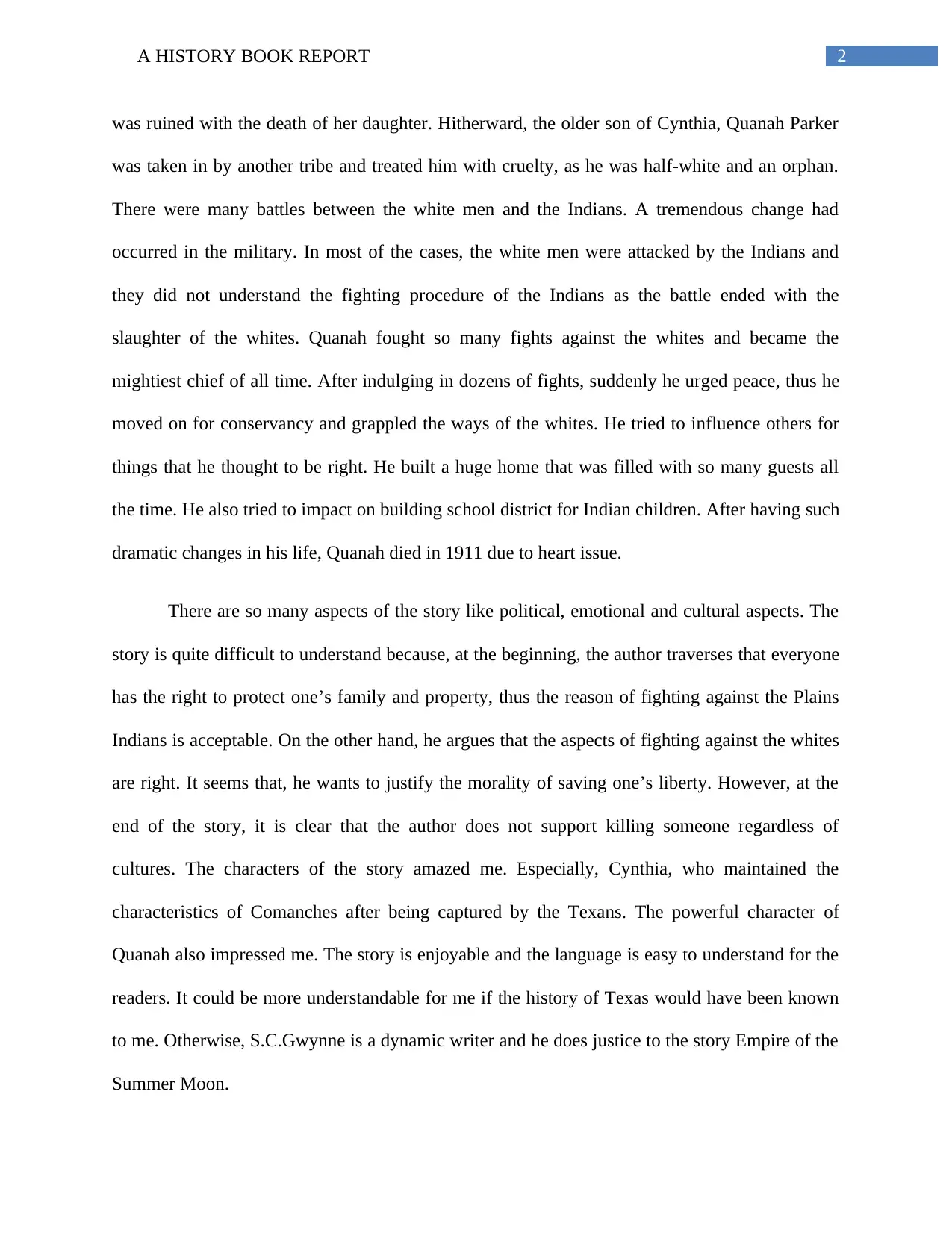University History Book Report: Empire of the Summer Moon Analysis
VerifiedAdded on 2021/06/14
|5
|913
|236
Report
AI Summary
This report analyzes S.C. Gwynne's 'Empire of the Summer Moon,' focusing on the history of the Comanches and the lives of key figures like Cynthia Ann Parker and Quanah Parker. The report examines the Comanches' social, economic, and political changes, as well as their conflicts with the national government and white settlers. It discusses the author's perspective on cultural values, violence, and morality, highlighting the impact of historical events on the characters' lives and the tribe's fate. The report explores themes of cultural preservation, conflict resolution, and the complexities of historical interpretation, offering insights into the narrative's strengths and potential areas for deeper understanding, particularly regarding the history of Texas. It emphasizes the importance of understanding historical context and moral implications within cultural frameworks.
1 out of 5









![[object Object]](/_next/static/media/star-bottom.7253800d.svg)